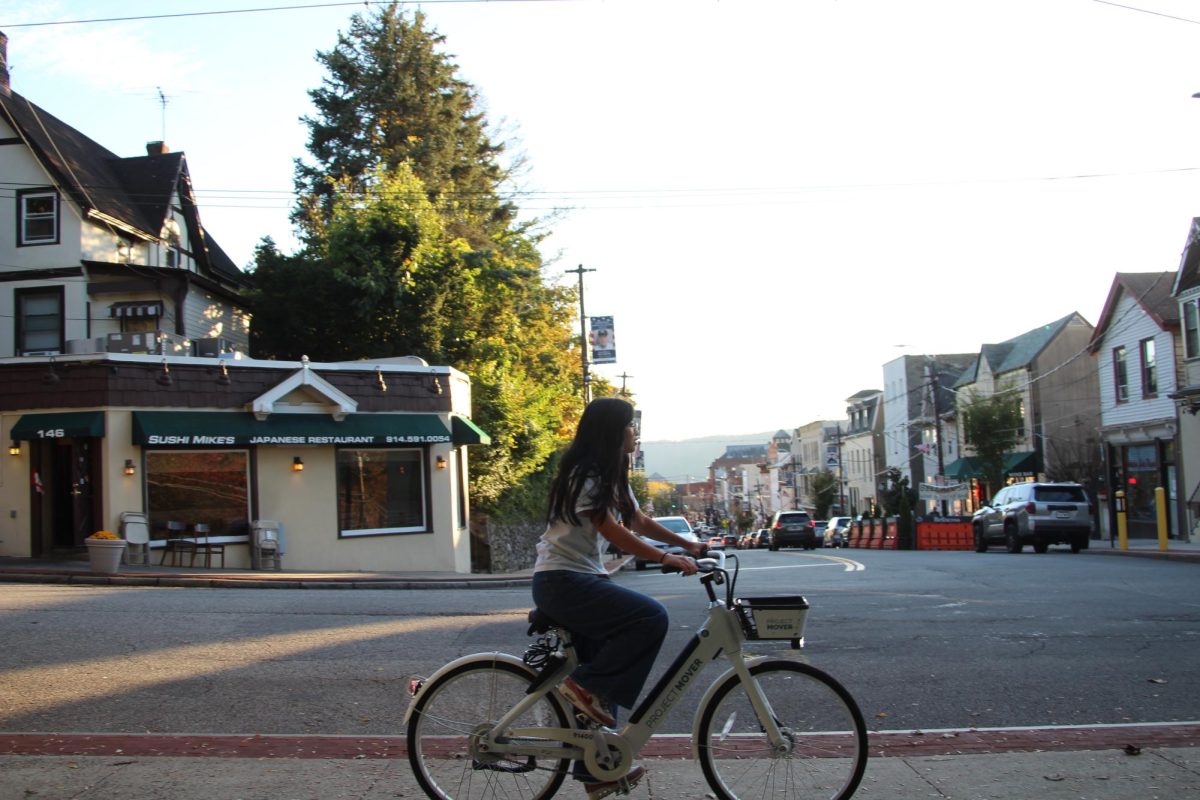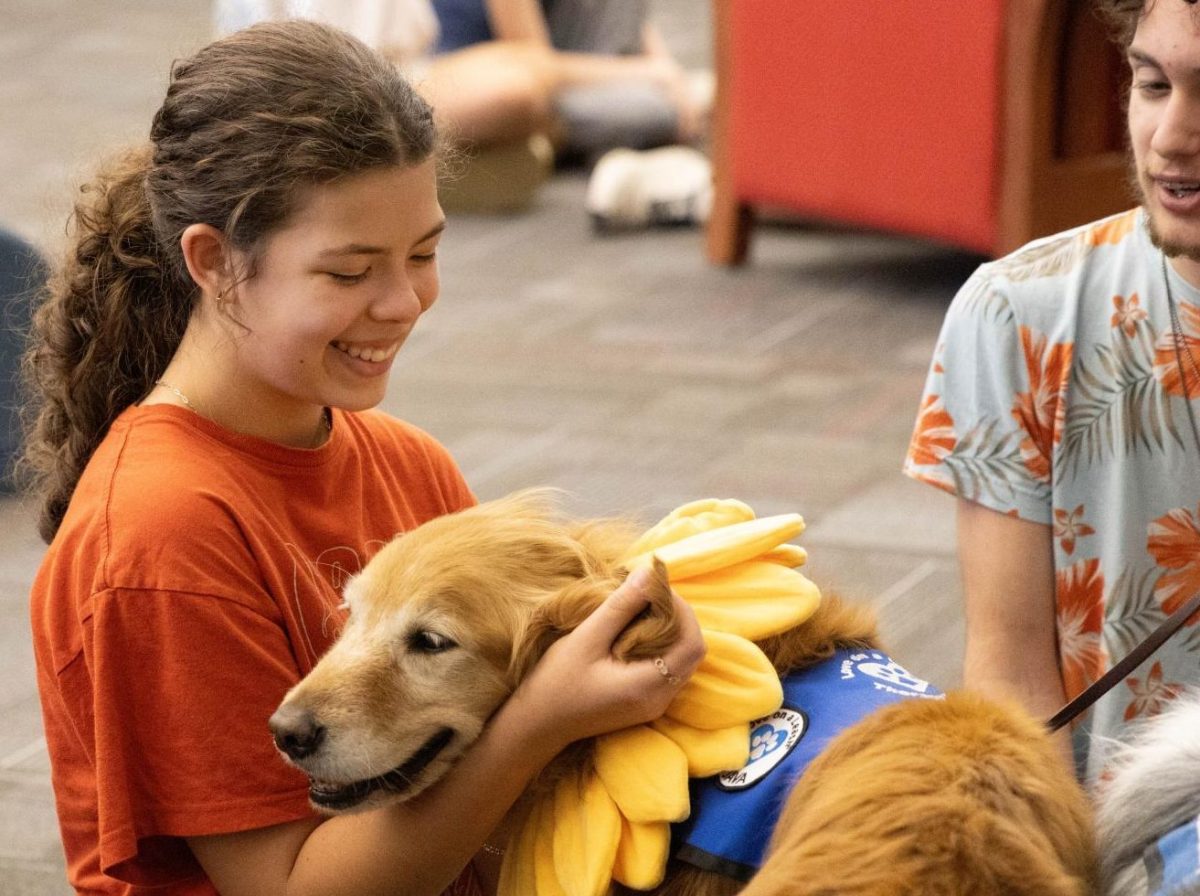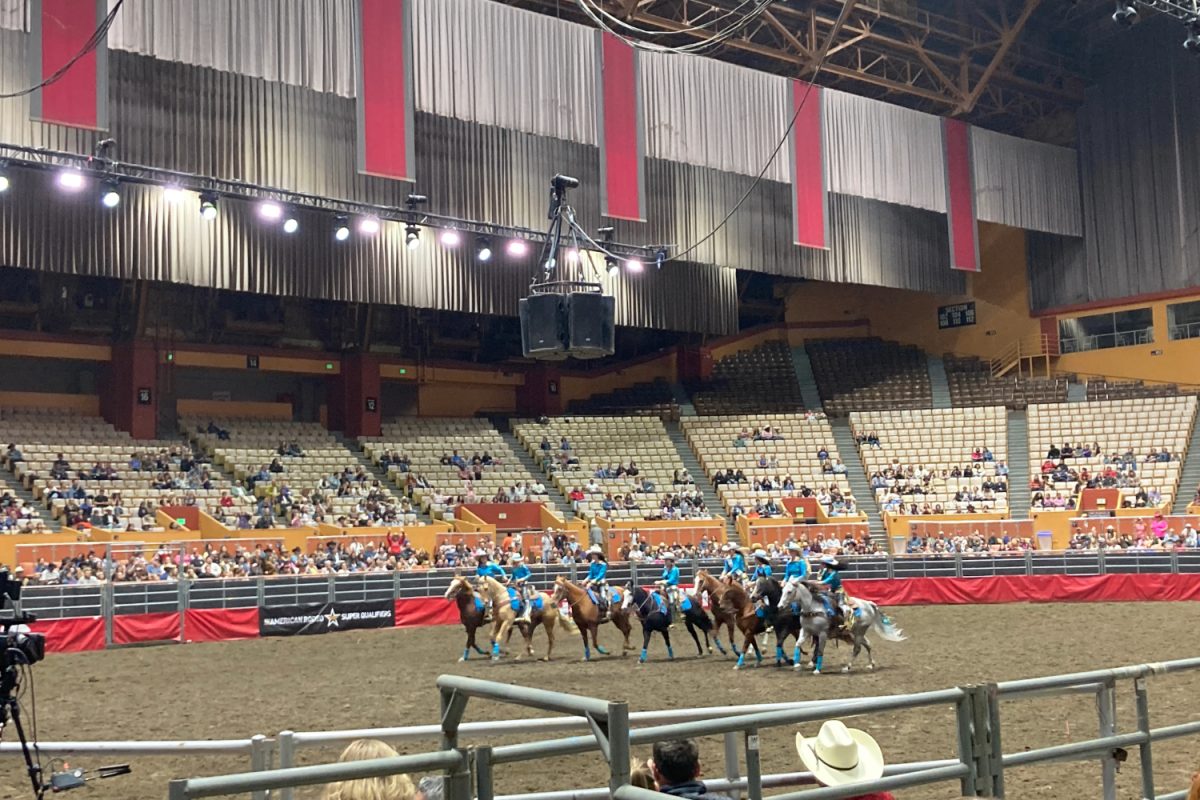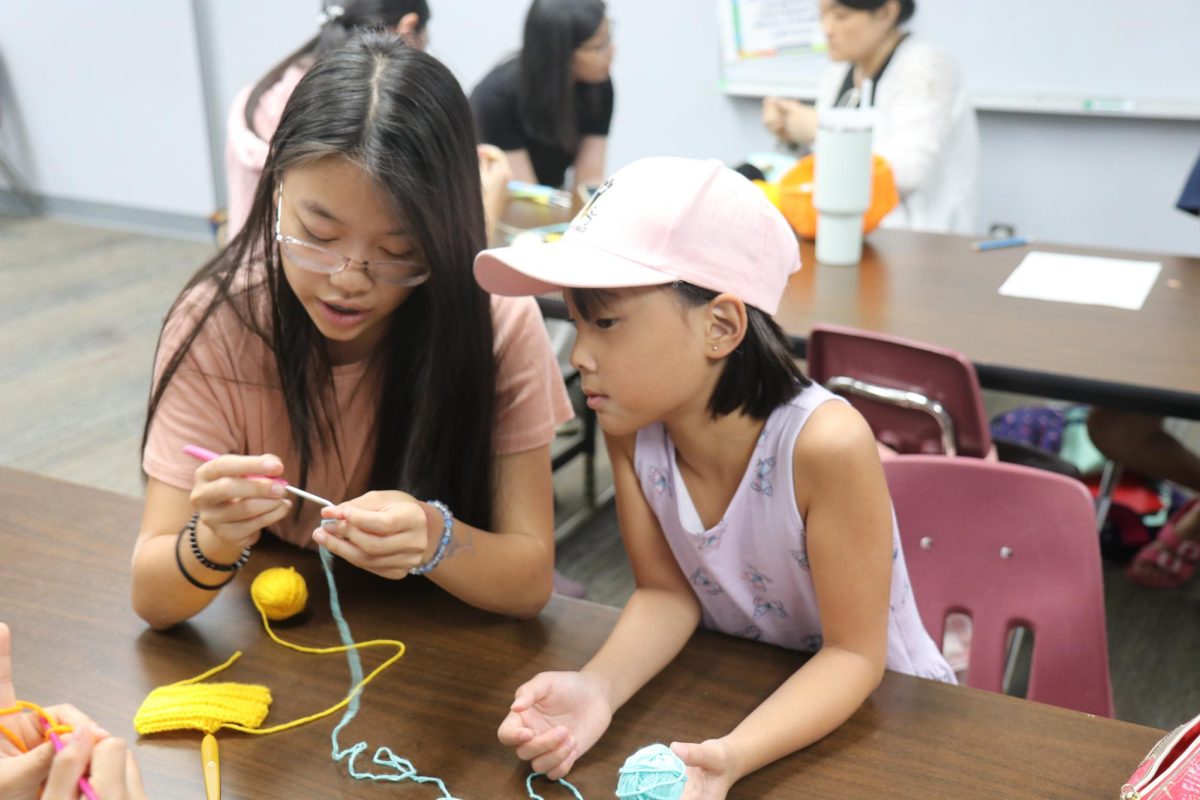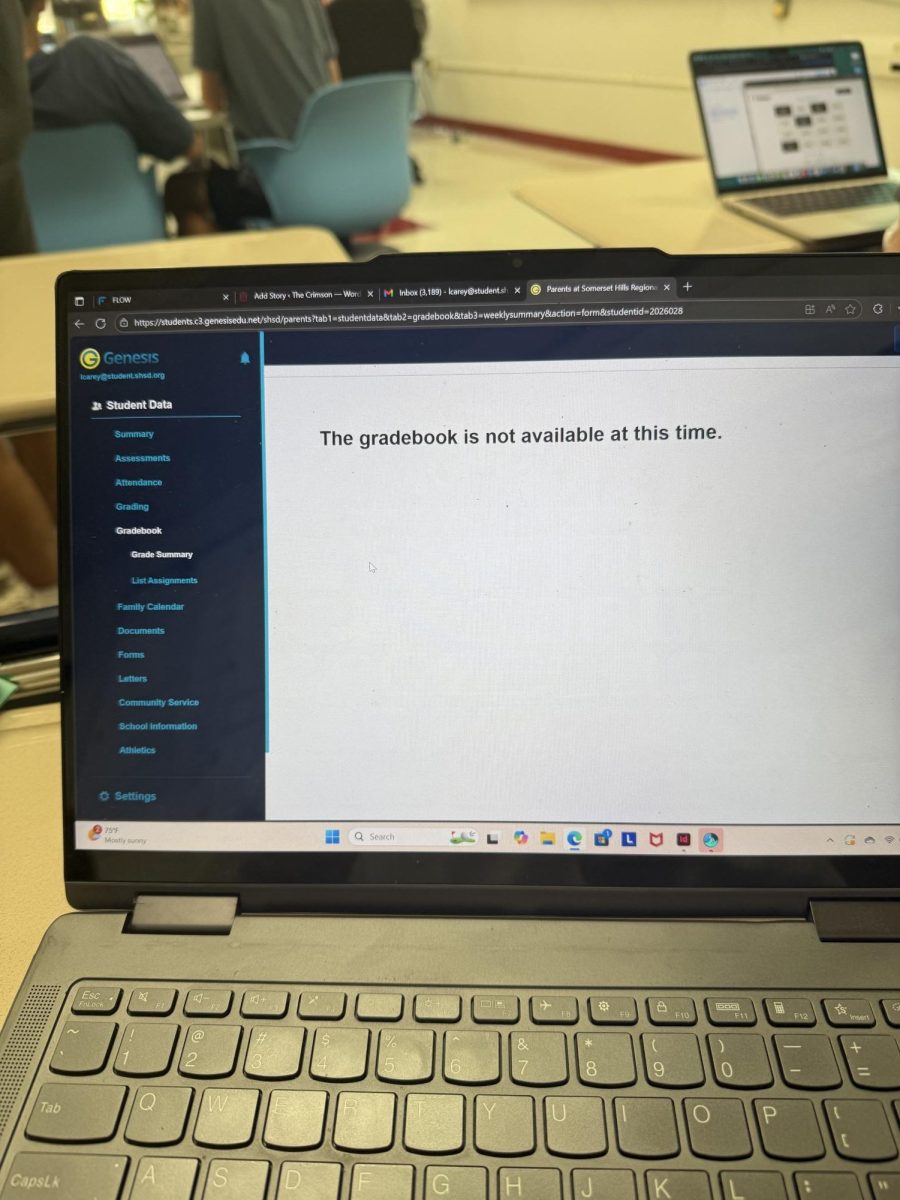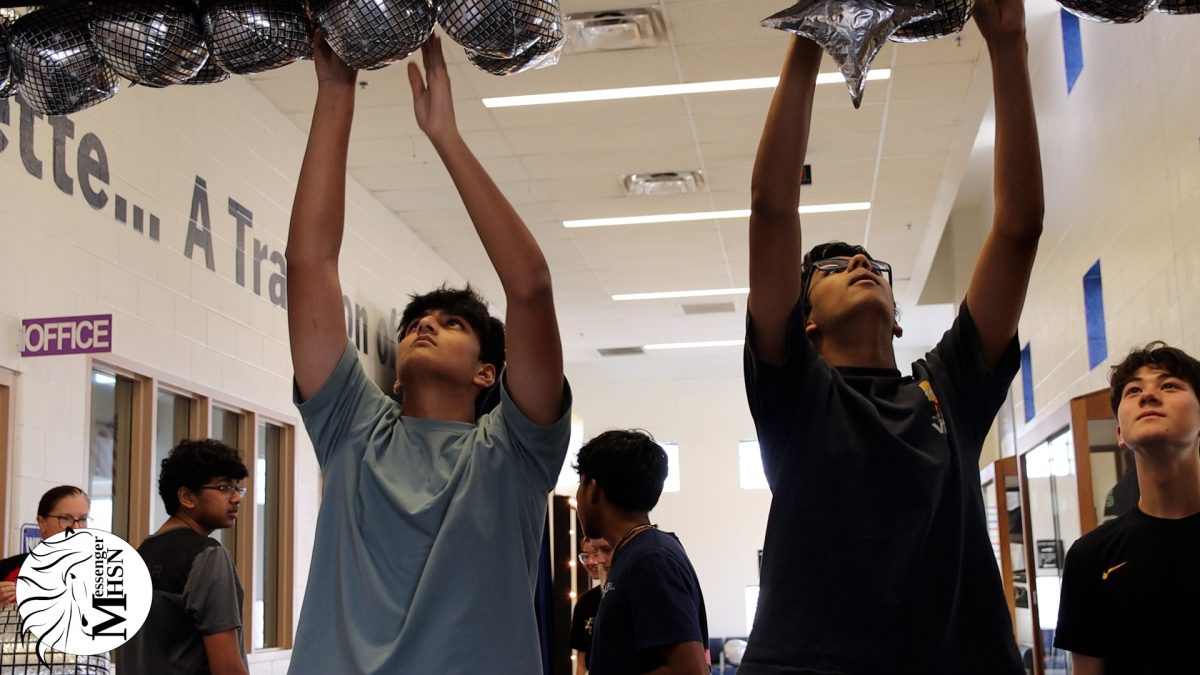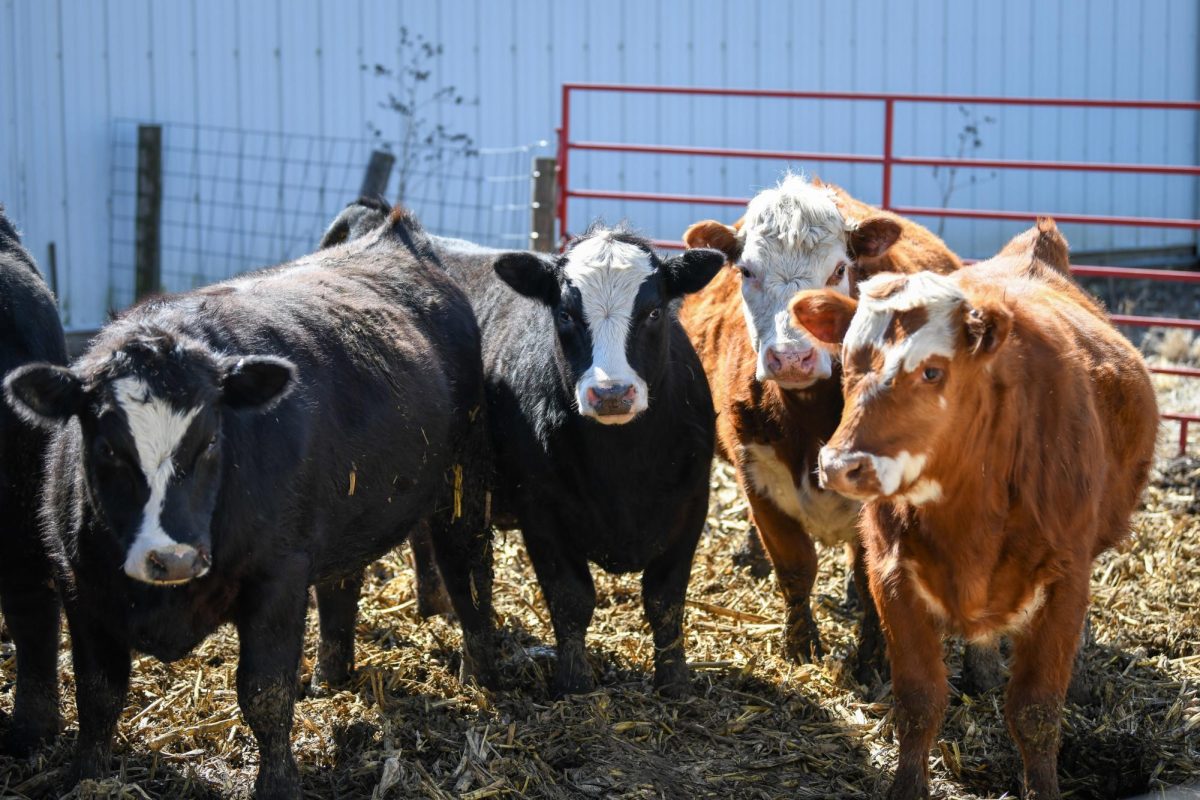In 2024, Iowa farmers produced 2.63 billion bushels of corn and 598 million bushels of soybeans as the top corn-producing state. In 2022, the agricultural industry in Iowa also supplied $88.3 billion to the economy and supported 315,000 jobs.
However, the impact of agriculture is felt more on a global scale, as there is a large economic dependence on certain products. Iowa-produced corn and soybeans not only impact trade, but also make up everyday foods. Corn is often used to make high fructose corn syrup, which is used in a wide range of products including baked goods, cereals and soft drinks. Technology must advance to keep up with the high demand, especially in the agricultural sector as crop yields increase. In fact, Iowan farmers averaged 211 bushels of corn per acre in 2024, the highest yield in Iowa history.
American history and behavioral health teacher Jessica Mehegan and her husband, Scott Klemp, own a farm where they raise cattle and grow corn and soybeans. The farm has been in Klemp’s family for nearly a century, and over time, Klemp has observed practice changes as technological advancements become readily accessible.
“The biggest changes I’ve seen are the use of technology, especially with GPS guidance and the accuracy that provides for applying pesticides or planting seeds, or even doing our tillage. Our equipment has become more efficient, faster, more capable. Our facilities have [been] changed to be more open, so you can get in and use your tractor or skid loader to clean everything out,” Klemp said. “[Although] there’s still physical labor involved, it used to all be done by hand, [but] now it’s more with machinery.”
The USDA estimates around 57.6 billion metric tons of soil have been lost across the Midwest in the past 160 years. Klemp worries about soil erosion, which diminishes agricultural efficiency through nutrient depletion as topsoil is degraded due to wind, water or tillage. Soil erosion leads to decreased crop yields, negatively impacting food security and the climate. To combat this, Klemp uses techniques like no-till farming, cover crops and crop rotation to ensure that the soil will build up necessary nutrients to produce optimal yields.
“One thing we do is plant a cover crop in the fall so that those roots can start growing and hold the soil in place. No-till farming helps to build biological activity in the soil. When you turn that soil over, you’re exposing all the black dirt [to] the sun,” Klemp said. “By doing no-till, you’re holding the soil in place and [allowing] the organic matter [to] naturally break down.”
Another strategy for crop and planting efficiency is corn-soybean rotation, a common crop rotation which utilizes nitrogen fixation to replenish the soil. Nitrogen is a vital nutrient for plants, which draw nitrogen gas from the atmosphere and add it to the soil by using nitrogen-fixing bacteria. Along with crop rotation, many farmers, including Klemp, use fertilizers to restore nitrogen in the soil. However, he makes sure to apply it during the right conditions so the soil is maintained in the correct place.
“Anhydrous is the most economical form of nitrogen [fixation], so we use a product called N-serve, a nitrogen stabilizer. We’re careful about the time we apply it. You want to apply [nitrogen] when the conditions are right. We use [what] we can to hold everything where it should be, and [we utilize] the natural process of crop rotation,” Klemp said.
Unlike organic farmers who use natural processes to improve soil health and avoid chemical intervention, Klemp is a commercial farmer who utilizes genetically modified organisms. GMO technology genetically alters crops, reducing dependence on pesticides and creating more resistant crops that can withstand potential environmental damage.
“If I can buy a seed that has a resistant rootworm trait, it’s [protecting] the seed, so that’s genetically modified. I believe in it. I don’t think it’s harming the [crops]. You’re avoiding the use of more pesticides. It’s much more difficult to apply pesticides and get effective use out of them without them moving off your target and possibly causing harm to anything else,” Klemp said.
Although there are several health risks of GMOs, such as exposure to allergens and toxins, pesticides also have multiple risks. Klemp is careful when applying pesticides and follows strict guidelines to protect the crops and produce an optimal outcome.
“[Pesticides] only get applied by a licensed applicator, and we follow the Environmental Protection Agency guidelines [for] a certain rate at a certain time, and a certain pressure. We [also add an] anti-drift additive to the mix, so that helps prevent [airborne pesticide particles] from drifting off,” Klemp said.
Parker Boback ’26 works on a farm in rural Iowa, where he helps with chores such as taking care of cows and spreading manure over soil to fertilize the land. Like Klemp, Boback is familiar with the usage of GMOs in agriculture as he works and uses Pioneer Seeds, a company which produces and markets hybrid seeds for farming.
“I know it’s much harder [to farm without GMOs] because the crops don’t do as well without being modified, and you can’t fertilize the ground. [GMOs produce] more of a healthy crop, and you get way more out of it than having it natural,” Boback said.
Stefan Gailans is a senior research manager at Practical Farmers of Iowa, an organization dedicated to helping farmers create more sustainable and resilient farms. Gailans leads its Cooperators’ Program, which helps farmers discover the most efficient way to employ farm practices and creates plans for farmers down the road.
“Practical Farmers of Iowa’s farmer-led research brings together a community of very creative and curious farmers who wish to perform scientific experiments on their farms to improve their farms and decision-making [skills],” Gailans said.
A major difference between conventional and organic farming is that organic farming limits the kinds of practices that farmers can use to help their crops.
“[Choice] might affect how an organic farmer decides on an experiment they might want to conduct. They’re not going to include an herbicide in their experiment because they can’t use those things. Conventional fertilizer products, like anhydrous ammonia or urea, are synthetic forms of nitrogen fertilizer that an organic farmer wouldn’t be able to use on their farm,” Gailans said. “They both have interests in using soil nutrients or applied nutrients judiciously and effectively, or using Pest Control Practices effectively. It just [depends on] what tools are available to them in their toolbox [which] might differ a little bit.”
Regenerative farming is a sustainable process used by many farmers who focus on the restoration of soil, using practices such as no-till, adaptive grazing, cover crops and decreased reliance on pesticides and synthetic fertilizers. Due to its long-term benefits on soil fertility, regenerative farmers leave crop residue in the soil for longer periods. The goal of regenerative farming is to produce healthy, viable crops while protecting the climate’s natural resources.
“Because regenerative agriculture tends to rely on natural cycles of nutrient turnover, [it is] considered a more sustainable practice for maintaining soil fertility, which can be helpful to raising crops,” Gailans said. “Practices like crop rotation can help alleviate pest pressure, insects, diseases and weeds that are otherwise controlled chemically.”
Although regenerative farming techniques have helped ecosystems maintain soil fertility and plant productivity, Gailans is grateful that Practical Farmers is a place where different methods of farming come together.
“Practical Farmers brings people together who are either practicing [new farming methods] or are interested in learning. That’s our model for helping others stay curious, learn and try new things, because they know they have another network of people: helping other farmers learn from each other within our community,” Gailans said.
Since its peak in 1935, the number of U.S. farmers has shrunk mainly due to increasing crop productivity, farms consolidating into larger commercial farms and better economic opportunities outside of agriculture. Gailans explains that as fewer Iowans are directly involved in agriculture, there will be more disconnect between Iowans and the state’s farming roots.
“We broke quite a bit of prairie to begin farming in the state 150 years ago or so, and that land, more or less, is still in production. People, even though they are not living on farms anymore, might be two generations removed [from the last farmer in the family],” Gailans said. “[Farming is] still going to be a large part of this state because the land is there, and it’s been very productive and fertile but can definitely be treated better.”
On the other hand, modern values from mainstream media sources have shaped a new ideal of “wellness” among the younger generation, who are becoming increasingly conscious of their health decisions. Appealing to a widespread audience, the negative effects of GMOs, such as toxic additives and growth hormones within non-organic products, have led to a trend of “clean and healthy eating.” Much of this lifestyle entails reading nutrition labels at grocery stores in search of organic meat, fruits and veggies, all of which contain higher levels of antioxidants compared to non-organic produce. The Organic Trade Association shows 71% of Gen Z and Millennials are more likely to purchase organic produce, representing a 36% increase from Baby Boomers and Gen X, who make up 55% of organic consumers within its population.
“[I am] surprised [by] how many people have become [more] interested in regenerative agriculture, sustainable agriculture [and] soil health. There’s more of a diverse alternative to conventional [products], which [is] interesting. There’s also been a greater awareness and push for local foods and a greater availability of local produce [from] farmers markets, local retailers [and] local grocery stores,” Gailans said. “It’s nice to see that people [involved in] agriculture are [becoming] more curious about certain practices [that] are good for soil quality, water quality [and] human health.”
As more individuals become concerned with nutritional value and prioritize their health, agriculture can change drastically in the future. Gailans believes he found his place at Practical Farmers and enjoys working with like-minded people who are all striving to achieve the same goal: improving lives.
“I’m absolutely floored by the amount of curiosity, creativity and research that [the] community I’ve worked with has produced in the last 11 years,” Gailans said. “It’s cool to see so many minds at work, [aiming] towards improving themselves, their farms, their communities [and] the environment.”
This story was originally published on West Side Story on April 17, 2025.


